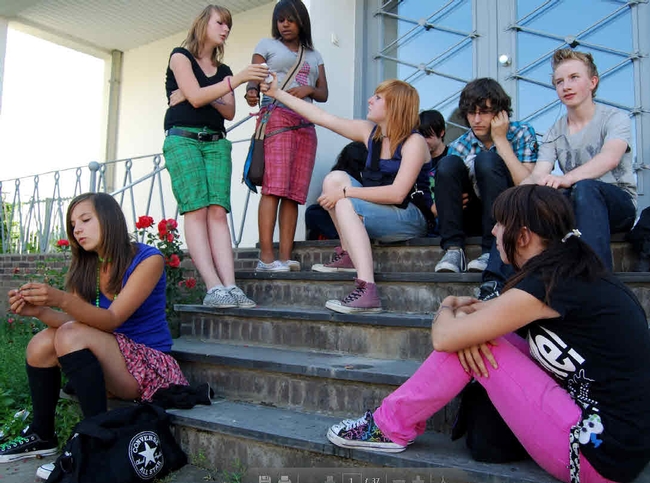
Some of the findings:
In almost all outcomes examined, the second generation ranks better than the first. For most outcomes examined, immigrant youth become more similar to nonimmigrants across generations. Sometimes this means improvement, such as an increased share of registered voters; other times it means deterioration, such as an increased share of smokers across generations. However, inequalities between immigrants and nonimmigrants often persist and even grow by the third generation.
- There is rapid assimilation in the demographic outcomes of marital status, position of the youth within the household, and having a child by age 22. In these outcomes, statistical differences between immigrant and nonimmigrant youth disappear by the second generation.
- Latinos who come to the United States as teenagers are unlikely to be attending school. Among 16- to 22-year-old, first-generation Latinos in 2012 and 2013 who came to the United States when they were 13 to 15, only about 40 percent were attending school at the time of the survey.
- The second generation in college is more likely than nonimmigrants to attend two-year college institutions and to attend college part time.
- Immigrant youth have higher wages and work more hours than nonimmigrant youth.
- Disconnectedness from work and school is more of a problem among first-generation young women than among other groups. First-generation young women are 1.73 times as likely as nonimmigrant young women to neither attend school nor work. There is no difference among young men.
- Immigrant youth are more likely to live in households with incomes at or below $40,000, to be enrolled in the Supplemental Nutritional Assistance Program (SNAP), and to live in households with low or very low food security.
- Immigrant youth are less likely to smoke cigarettes but are in poorer health than nonimmigrant youth.
- Immigrant youth are civically disengaged. Examination of civic engagement outcomes show disconnectedness from neighbors, communities, institutions, and the voting process among immigrant youth compared with nonimmigrant youth. An extreme finding is that only10 percent of all first-generation immigrants ages 18 to 24 voted in the 2010 and 2012 national elections compared with the 32 percent voting rate of nonimmigrant youth.
- Immigrant youth have less access to computers and the Internet than nonimmigrant youth.
The largest inequalities between second-generation and nonimmigrant youth are in the following outcomes:
- The second generation is over five times as likely as nonimmigrants to reside in California, Florida, New York, and Texas.
- The second generation is 1.55 times as likely as nonimmigrants to attend a two-year versus a four-year college.
- The second generation is 0.66 times as likely as nonimmigrants to attend college full time.
- The second generation is 1.8 times as likely as nonimmigrants to search for work through family and friends.
- The second generation is 0.74 times as likely as nonimmigrants to be in good or excellent health.
- The second generation is 0.37 times as likely as nonimmigrants to smoke cigarettes.
- Immigrant youth are 0.77 times as likely as nonimmigrants to do volunteer work and to be registered to vote.
A disturbing finding is the often uncovered U-turn of third-generation Latinos. After progress from first to second generation, there are retreats in outcomes, such as voter participation, school attendance, educational attainment, trust in institutions, trust and interchanges with neighbors, and disconnectedness from work and school. Whether these patterns prevail for third-generation Latinos or are the result of ethnic self-identification need further exploration. It is still accurate to say, however, that most third-generation youth who identify as Latino are doing poorly in many indicators of well-being compared with nonimmigrants and second-generation Latinos.
Source: The Urban Institute, Immigrant Youth Outcomes - Patterns by Generation and Race and Ethnicity by María E. Enchautegui, September 2014.